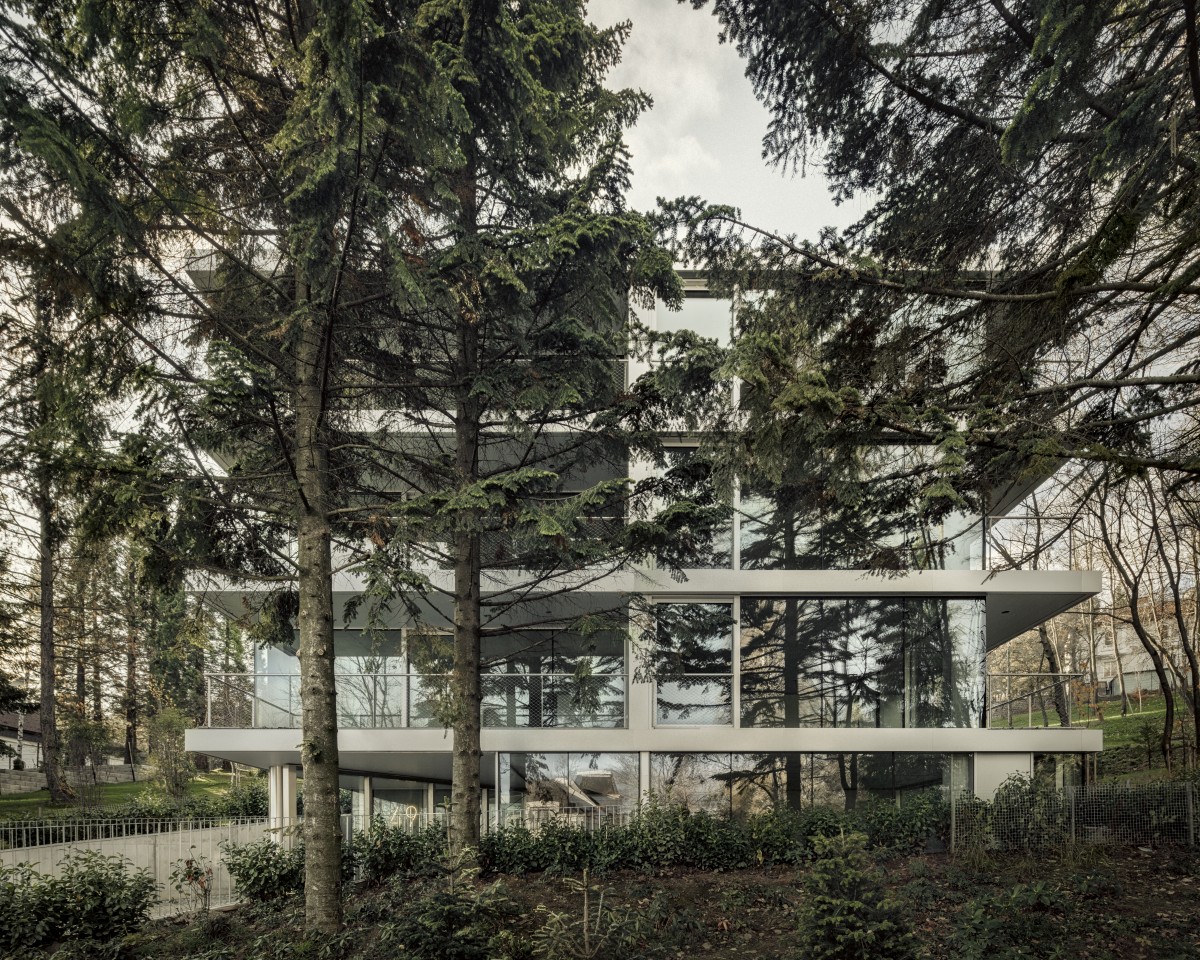





Establishing harmony between them is the most vital trend. It invites nature in the home in order to make the occupant feel great. The more thoroughly and ephemerally the boundaries are blurred inside and out, the more luxurious the inspiring experience. There is no doubt that the architects we are interacting with today are successfully achieving this effect.
Vyara Zhelyazkova and Georgi Katov, I/O Architects
www.ioarchitects.com
What are the most persistent clichés and prejudices that you need to overcome when it comes to an assignment for a ‘house with a yard’ and ‘a house in nature?
For instance, that large showcases are not an issue but rather a modern achievement; that it is better to devote a large portion of the budget toward appropriate solutions aimed at minimizing the construction and for hidden intelligent systems providing maximum comfort of living, rather than into ostentatiously expensive furniture; that it makes a difference whether the materials are natural or imitations of natural ones; that there is nothing better than the original. And, most of all, that the investment in a good architect is the most important thing for the end result.
What are the most interesting and effective ways to invite nature within a given space?
I remember an interesting project for a client who had made an emotional purchase of a small house from the 30s with an even smaller yard in Sofia’s centre. His occupancy plans were impossible in this situation, and furthermore, it was impossible to upgrade or rebuild. We left the house as it was and instead decided to build underneath. The small dimensions of the yard allowed us to reconstruct it on top of a mobile platform and so the yard was moving down when you are downstairs at the bedroom level, and during the day it went up to the level of the living area. The interesting thing was that this whole facility, which we created in cooperation with a mechanical engineer, turned out to be no more expensive than a ‘luxury’ elevator. In this case the connection with the external environment to some extent can be called ‘justified luxury’.
In another project, we used the space of a house’s staircase in order to create a periscope effect toward the garage at the underground level via a system of mirrors, so that the space of the living room upstairs would be reflected all the way down and ‘enter’ the garage (Eclipse House).
In Observation House once again we mounted a glazed 360-degree living room on top of a modern mastaba, so that when you are indoors the presence of the lavender and sunflower fields around the house envelops you completely.
The loss of security and the search for an asylum and an identity (resulting from the pandemic) – has it impacted architecture already? Is the expectation for the connection between the exterior and the interior already undergoing transformation?
For the time being we are witnessing how the investment in personal space is becoming of higher and higher priority. Contrary to previous rules, saying that the location is the most important thing, it seems that nowadays the quality of the actual living environment is coming to the forefront, and so is the connection with nature and the opportunities for transformation.